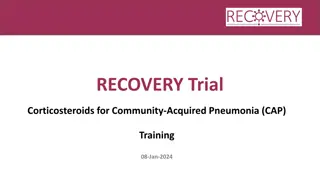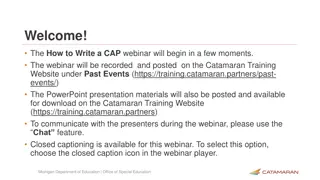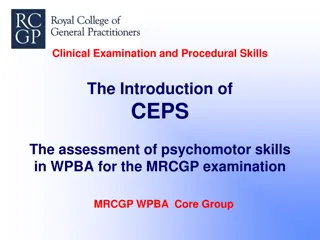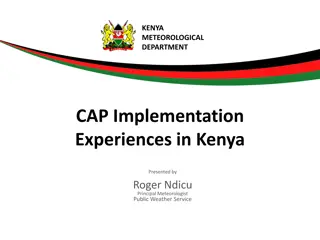
Direct Object Pronouns: Proper Usage and Examples
Learn how to correctly use direct object pronouns in Spanish sentences to avoid repetition, with clear explanations and practical examples. Understand where to place D.O.Ps based on different sentence structures and verb forms. Practice affirmative responses incorporating DOPs effectively.
Uploaded on | 0 Views
Download Presentation

Please find below an Image/Link to download the presentation.
The content on the website is provided AS IS for your information and personal use only. It may not be sold, licensed, or shared on other websites without obtaining consent from the author. If you encounter any issues during the download, it is possible that the publisher has removed the file from their server.
You are allowed to download the files provided on this website for personal or commercial use, subject to the condition that they are used lawfully. All files are the property of their respective owners.
The content on the website is provided AS IS for your information and personal use only. It may not be sold, licensed, or shared on other websites without obtaining consent from the author.
E N D
Presentation Transcript
Pronombres Pronombres de de complemento complemento Directo Directo (D.O.Ps) (D.O.Ps) Direct object pronouns tell who or what receives the action of the verb. They are used to replace a noun, in order not to repeat it. Remember that when the direct object is a person or group of people, we must use the personal a before it. Ex: Probaste el el pescado pescado? S , lo lo probe. (Did you try the fish the fish?) (Yes, I tried it it) Ves mucho a tus tus amigos amigos? S , los los veo todos los d as. (Do you see your friends your friends often?) (Yes, I see them them every day)
The Direct Object pronouns are: me nos te os lo/la los/las
Pronombres Pronombres de de complemento complemento Directo Directo (D.O.Ps) (D.O.Ps) Direct object pronouns generally go before the main verb. If there is a no before the verb, the pronoun goes between the no and the verb. Ex: Antonio comi las desayuno. Yo no las las uvas uvas. Las las com . Las comi en el (Antonio ate all the grapes breakfast. I didn t eat them the grapes. He ate them them.) them at
Pronombres Pronombres de de complemento complemento Directo Directo (D.O.Ps) (D.O.Ps) If a verb is followed by an infinitive or a present participle (present progressive), the D.O.P. may go before the main verb or it may be attached to the infinitive or present participle. Ex: Vas a comer el el helado helado? Lo Lo estoy comiendo ahora./Estoy comi ndolo lo ahora. OR No, no lo lo quiero comer./No, no quiero comerlo lo. .
Pronombres Pronombres de de complemento complemento Directo Directo (D.O.Ps) (D.O.Ps) With a positive command, the pronoun is attached to the end of the command Ex: Come las pap s = C melas However, with a negative command, the pronoun goes after the no and before the command. Ex: No comas las pap s = No las comas
Prctica: Contesta las preguntas siguientes de manera afirmativa usando los DOPs correctamente. 1. Tu pap comi los espaguetis? 1. 1. S S , , los los comi comi . . 2. Tu hermanita prob el helado de chocolate? 2. 2. S S , , lo lo prob prob . . 3. 3. S S todos todos quieren la la quieren quieren comer. quieren comer comer. comerla la/ / S S todos todos 3. Todos quieren comer la sopa? 4. No hay nadie que quiere probar los pasteles? 4. 4. S S hay hay alguien alguien que probar probarlos los/ /S quiere quiere comer. comer. que quiere quiere S hay hay alguien alguien que que los los 5. Me gusta la chuleta de cerdo? 5. 5. S S te te la la gusta gusta. . 6. Mi hermanita y yo comimos los huevos con tocino? 6. 6. S S los los comimos comimos. . 7. Mis padres probaron el yogur de durazno? 7. 7. S S lo lo probaron probaron





















